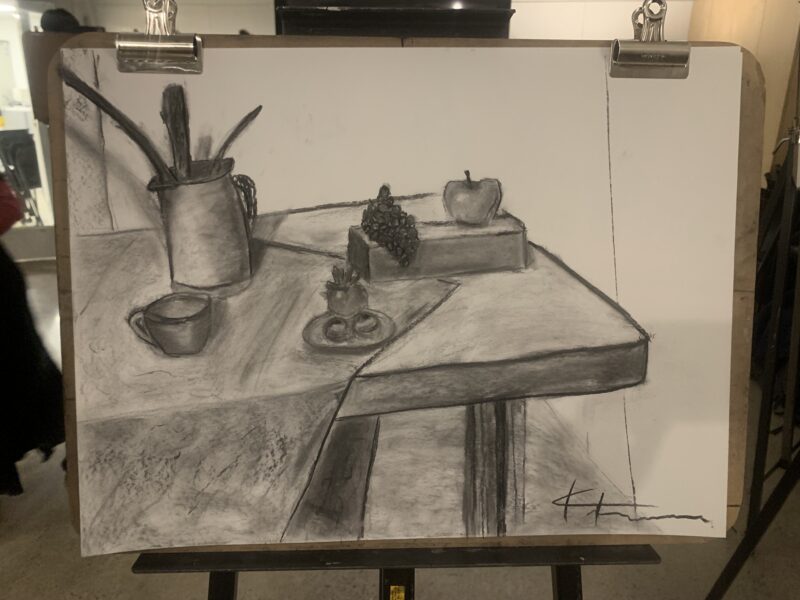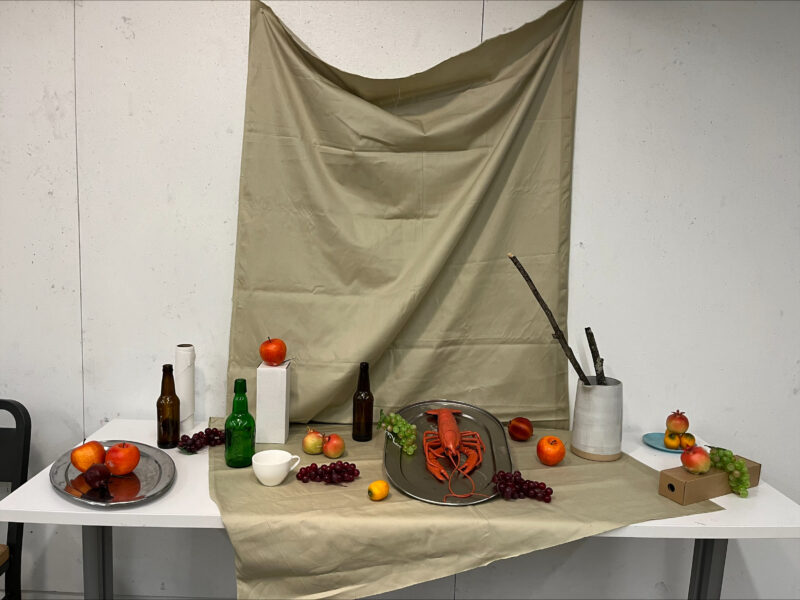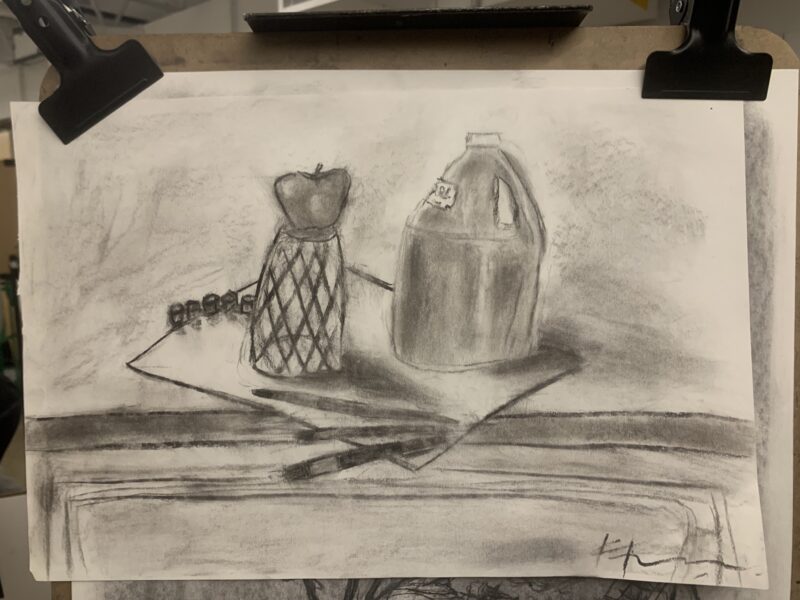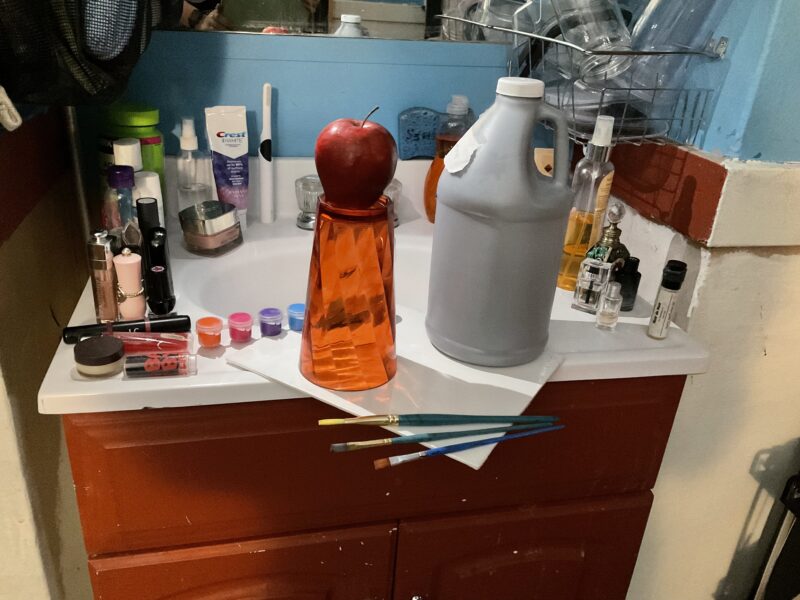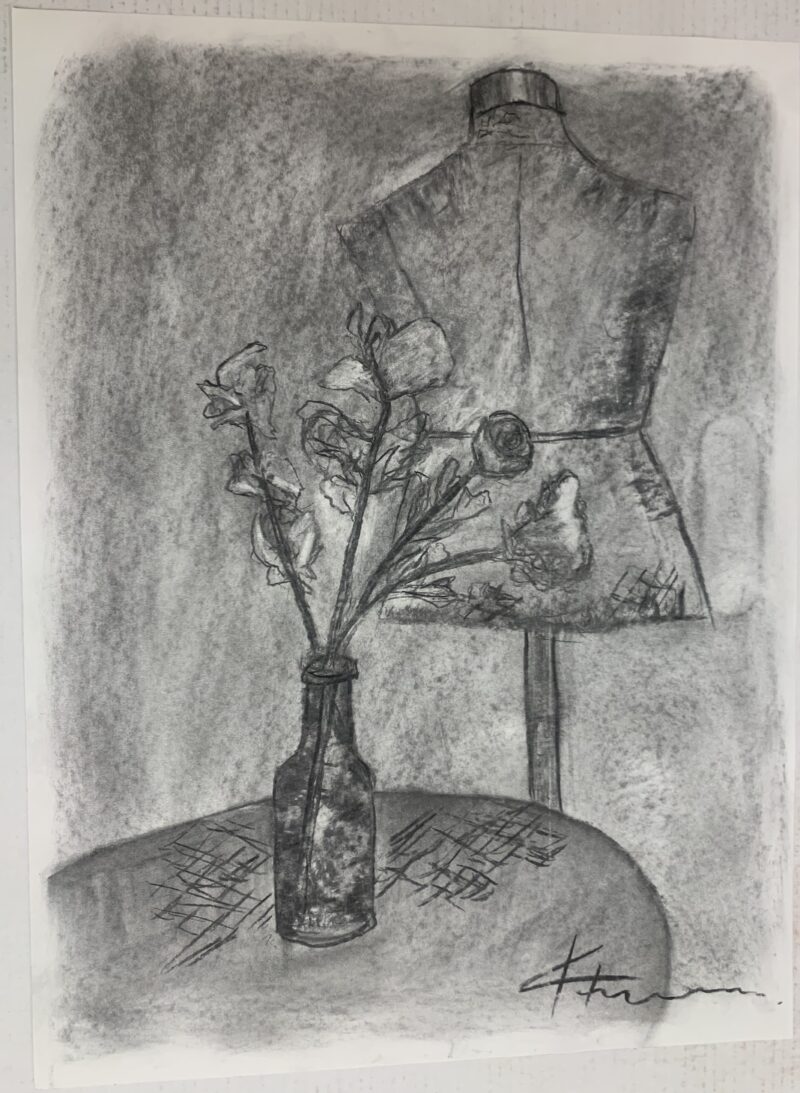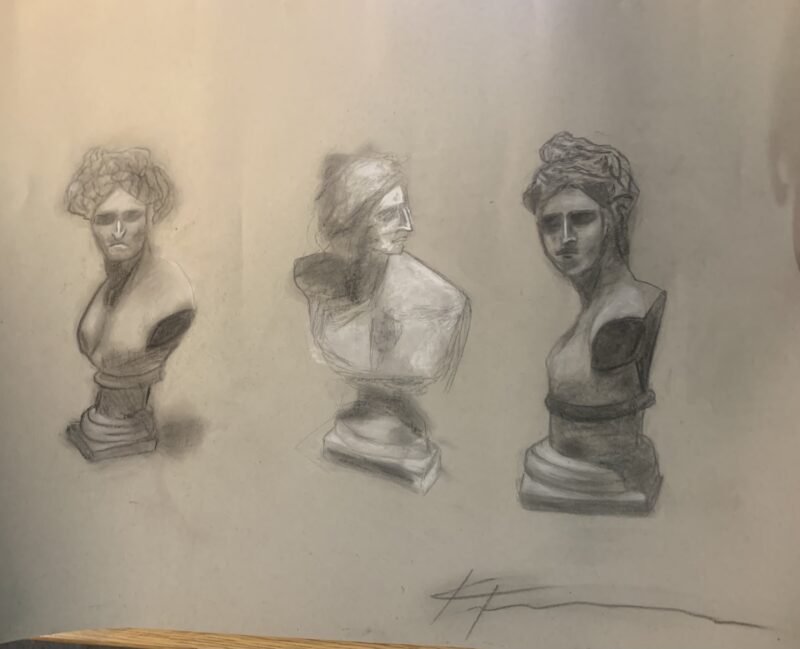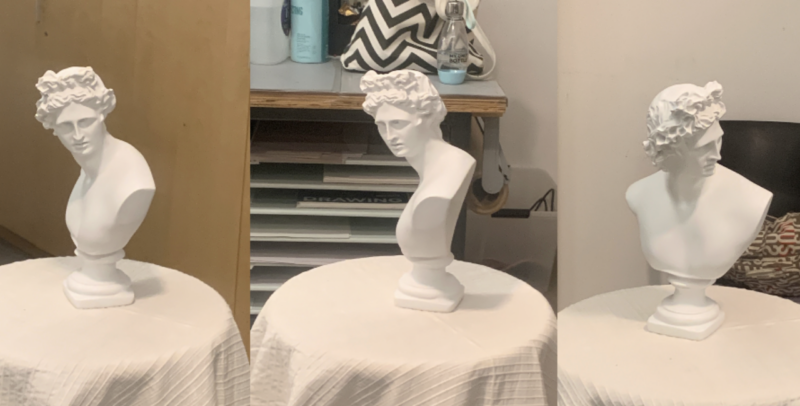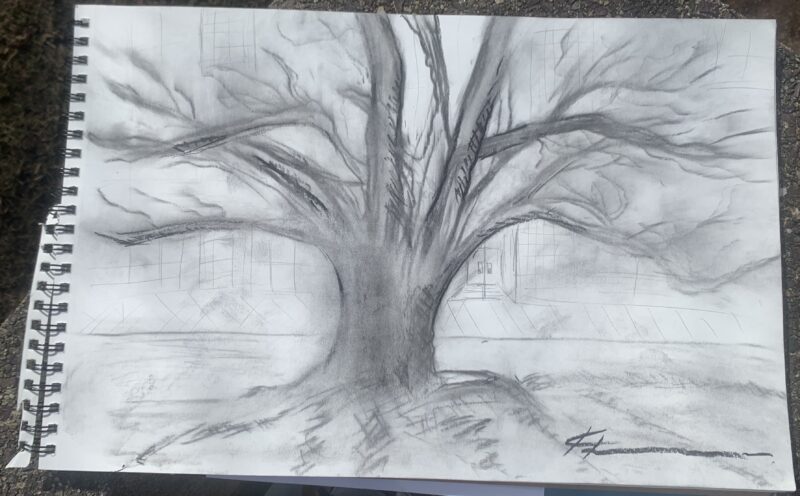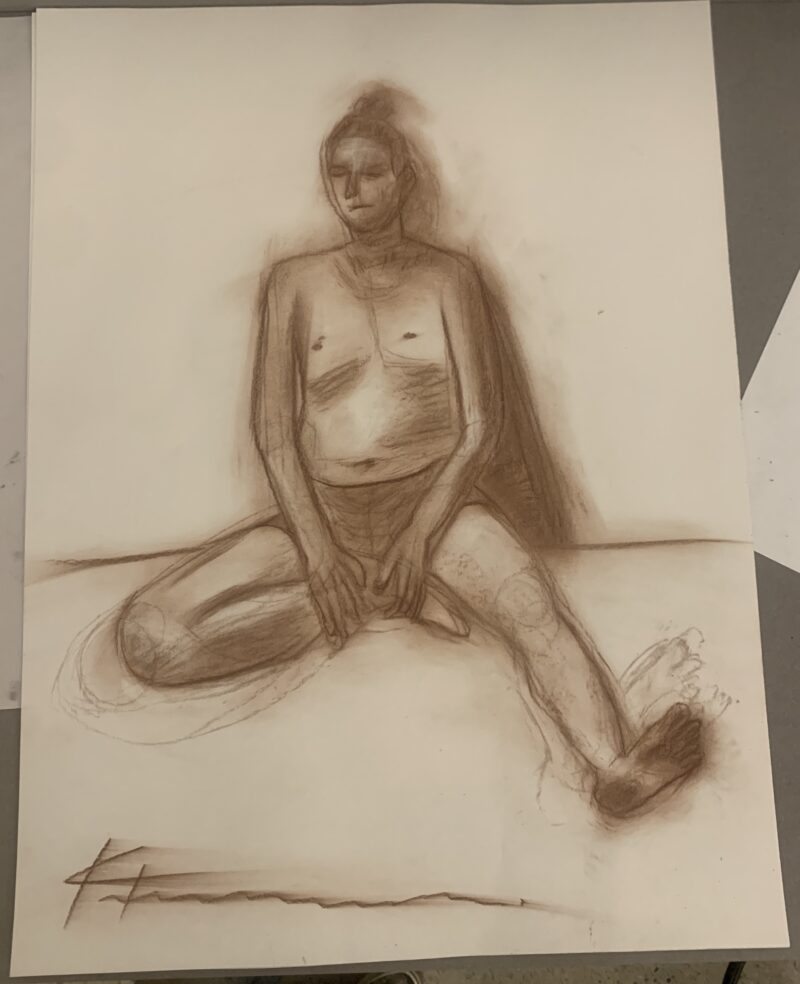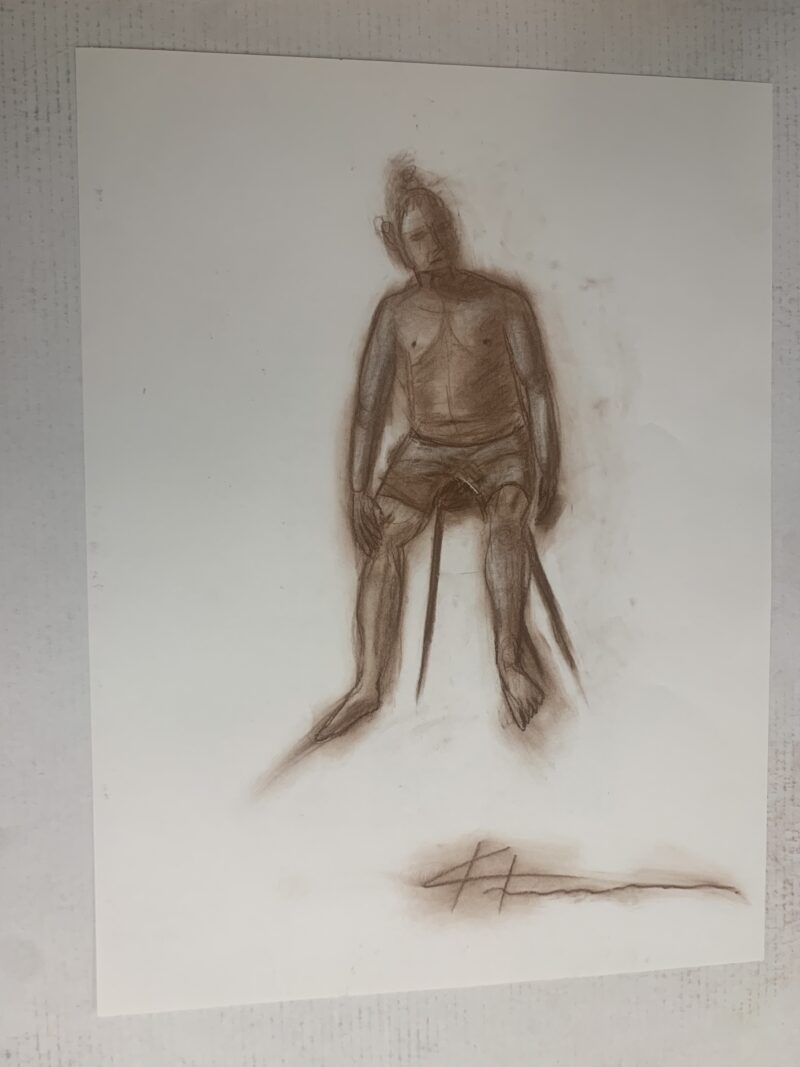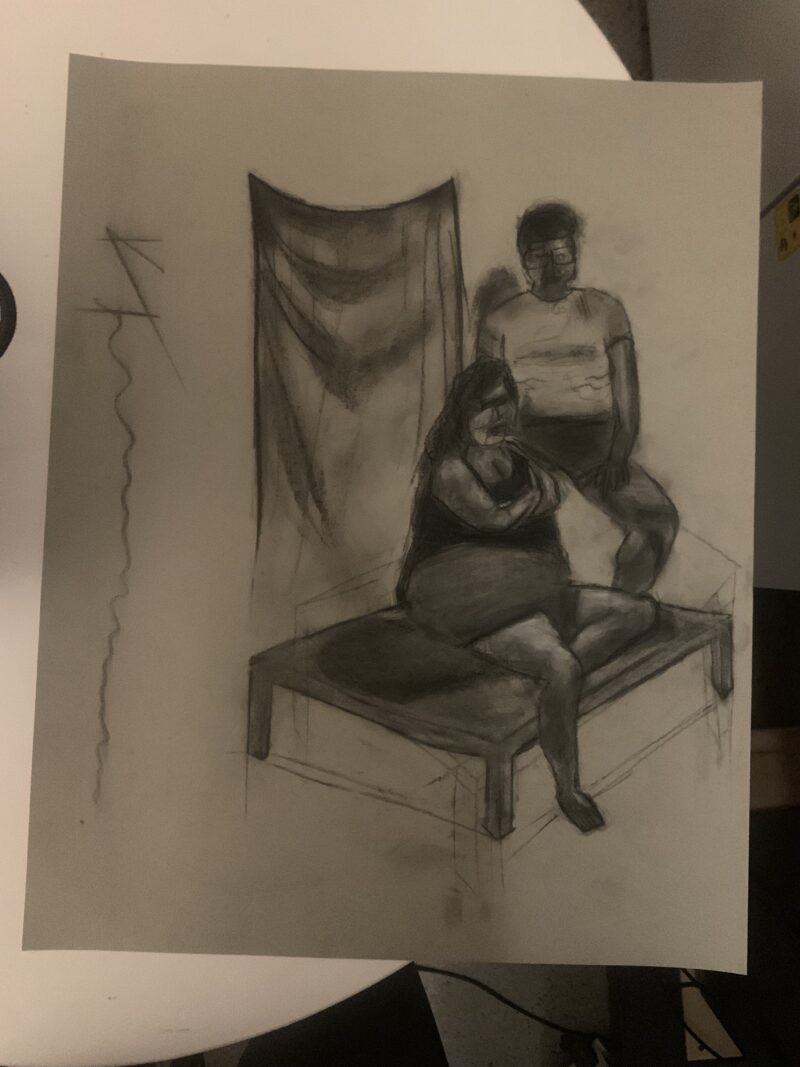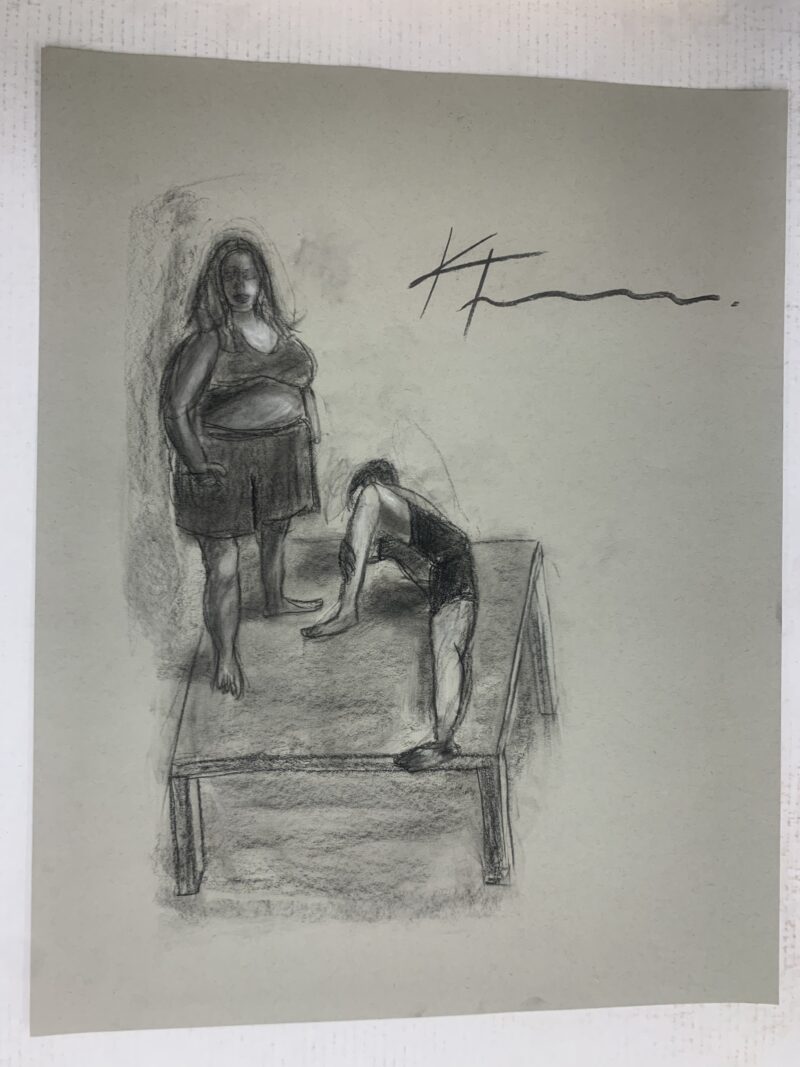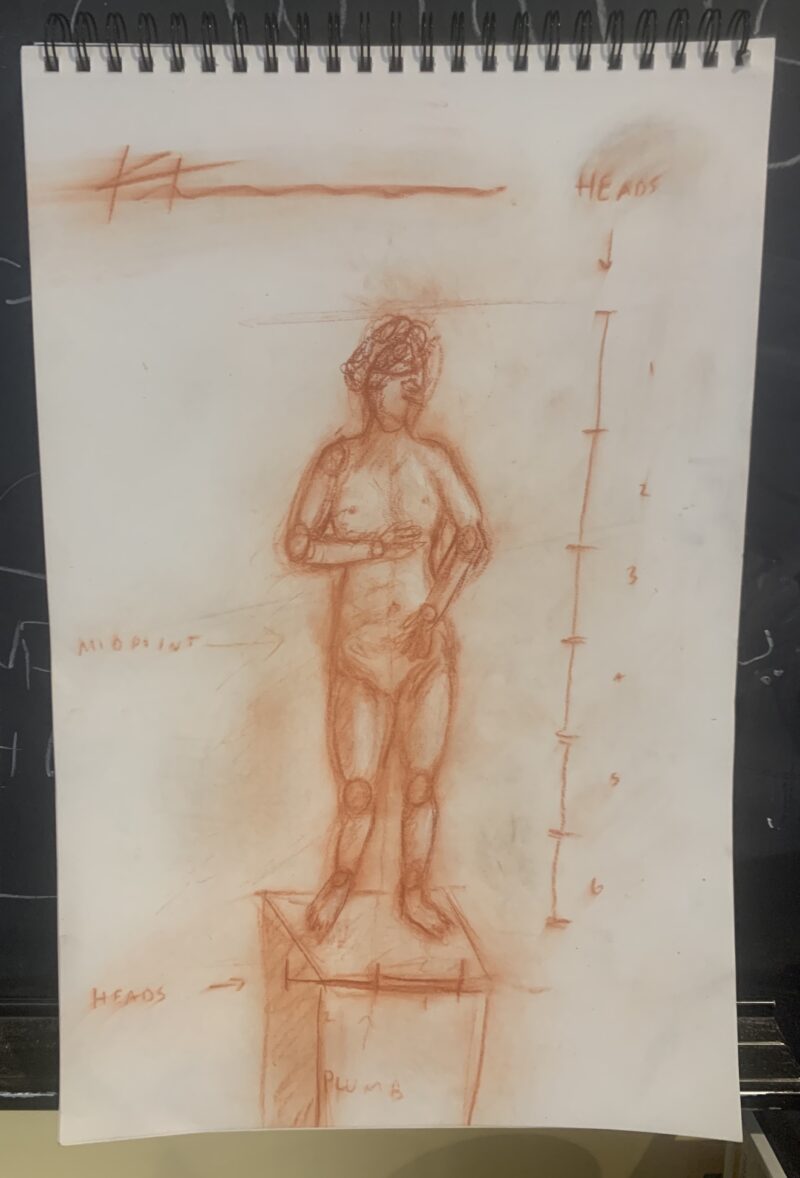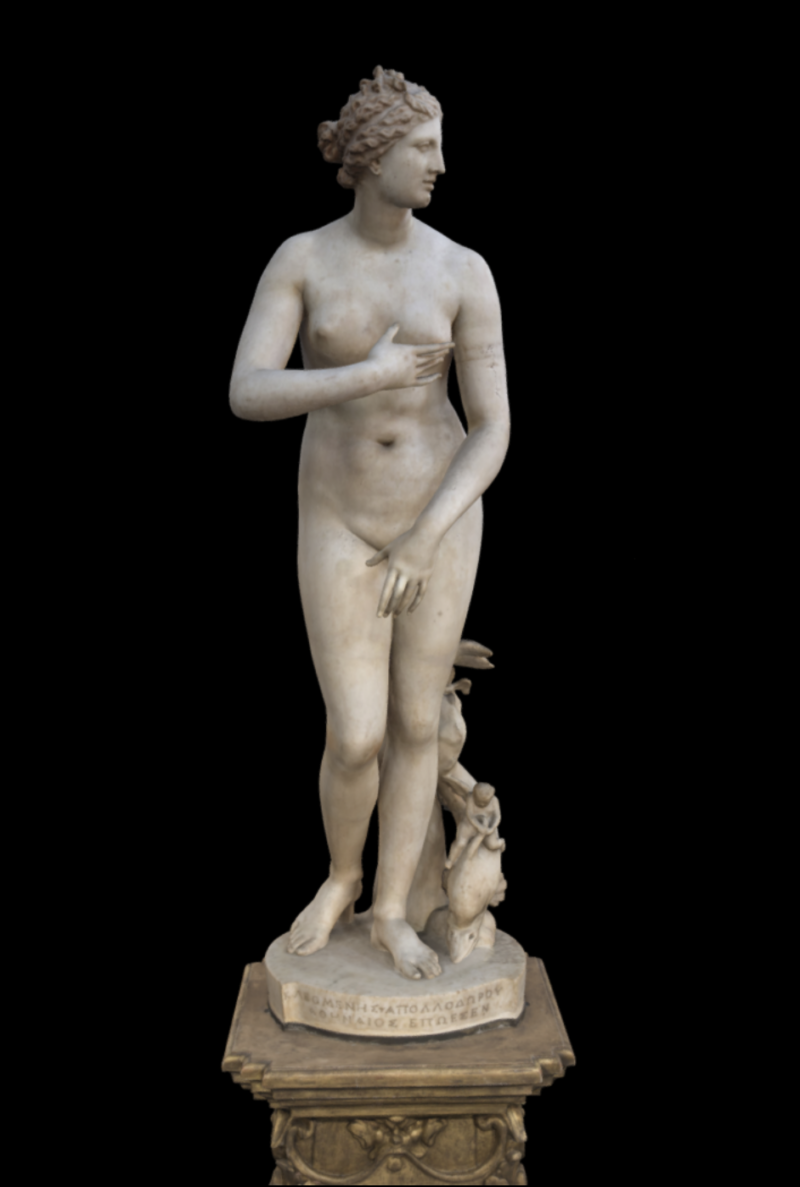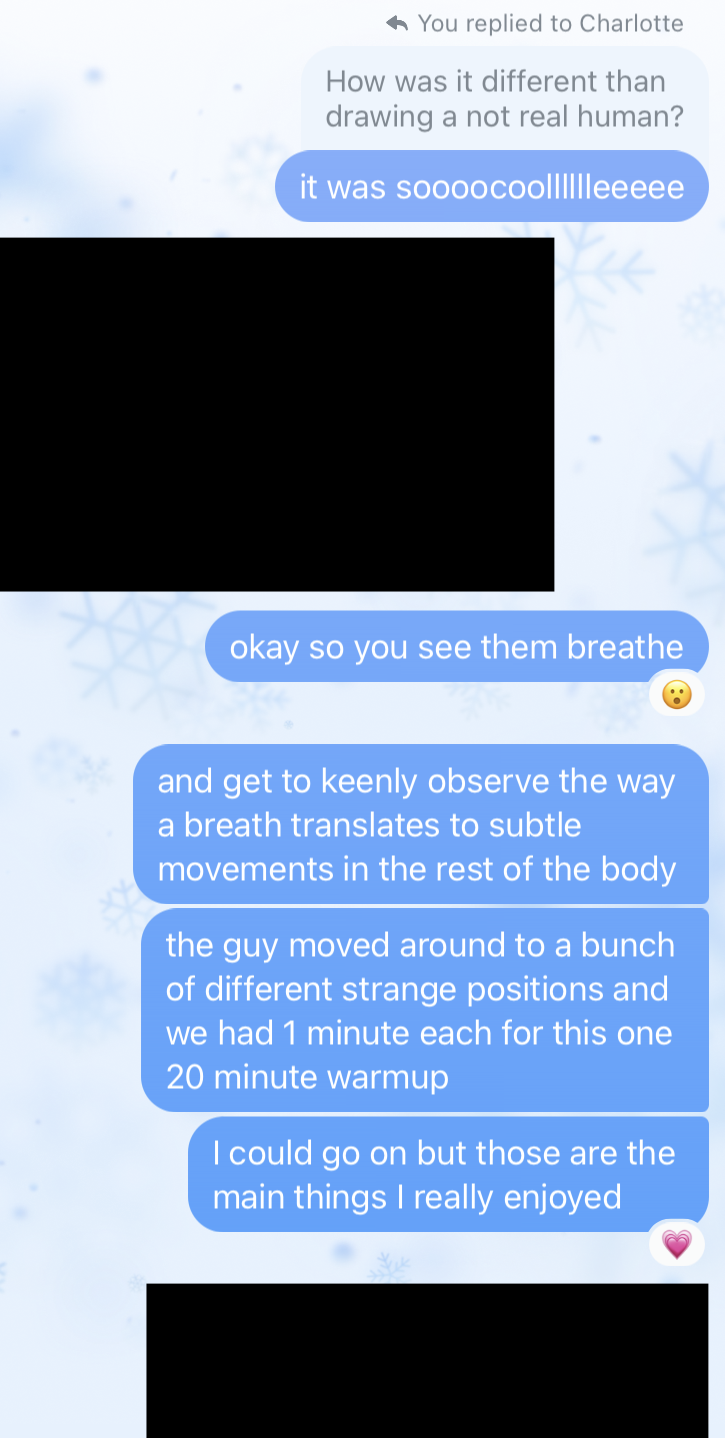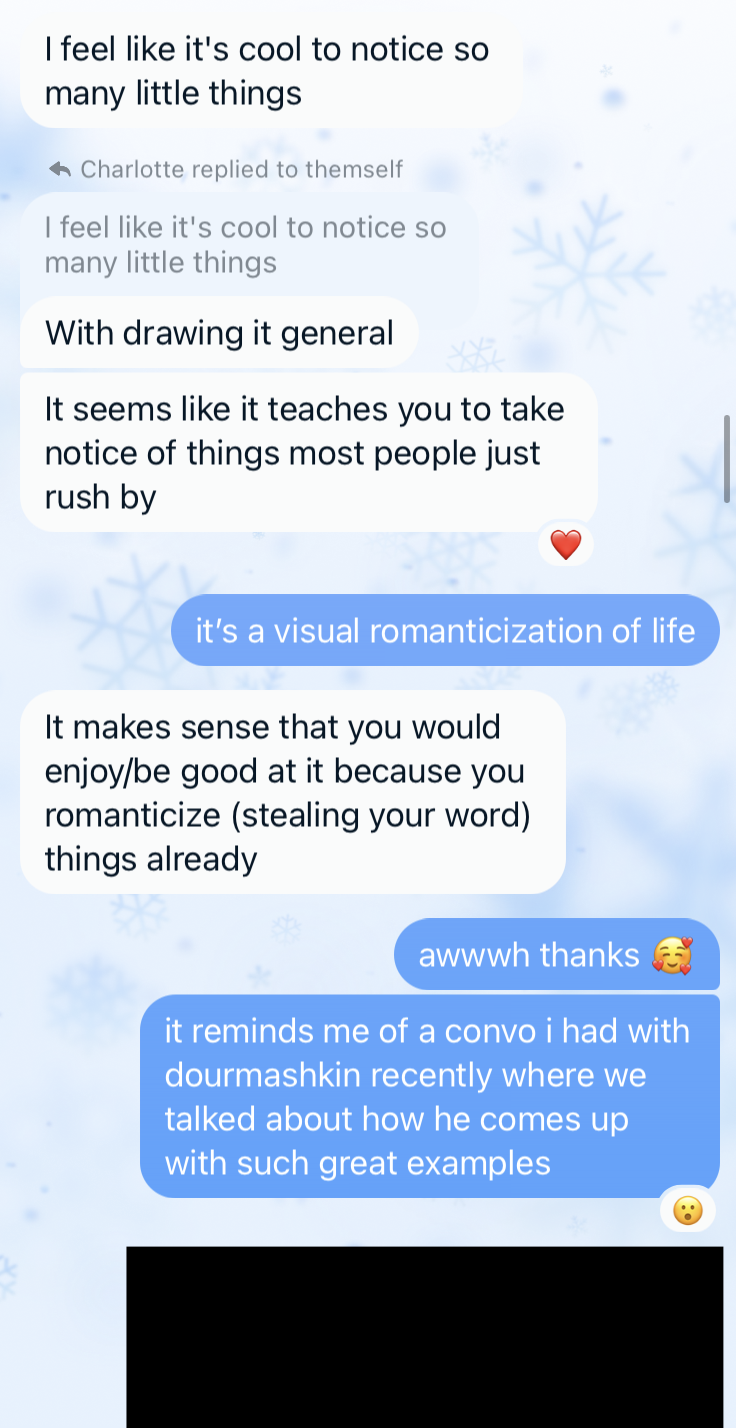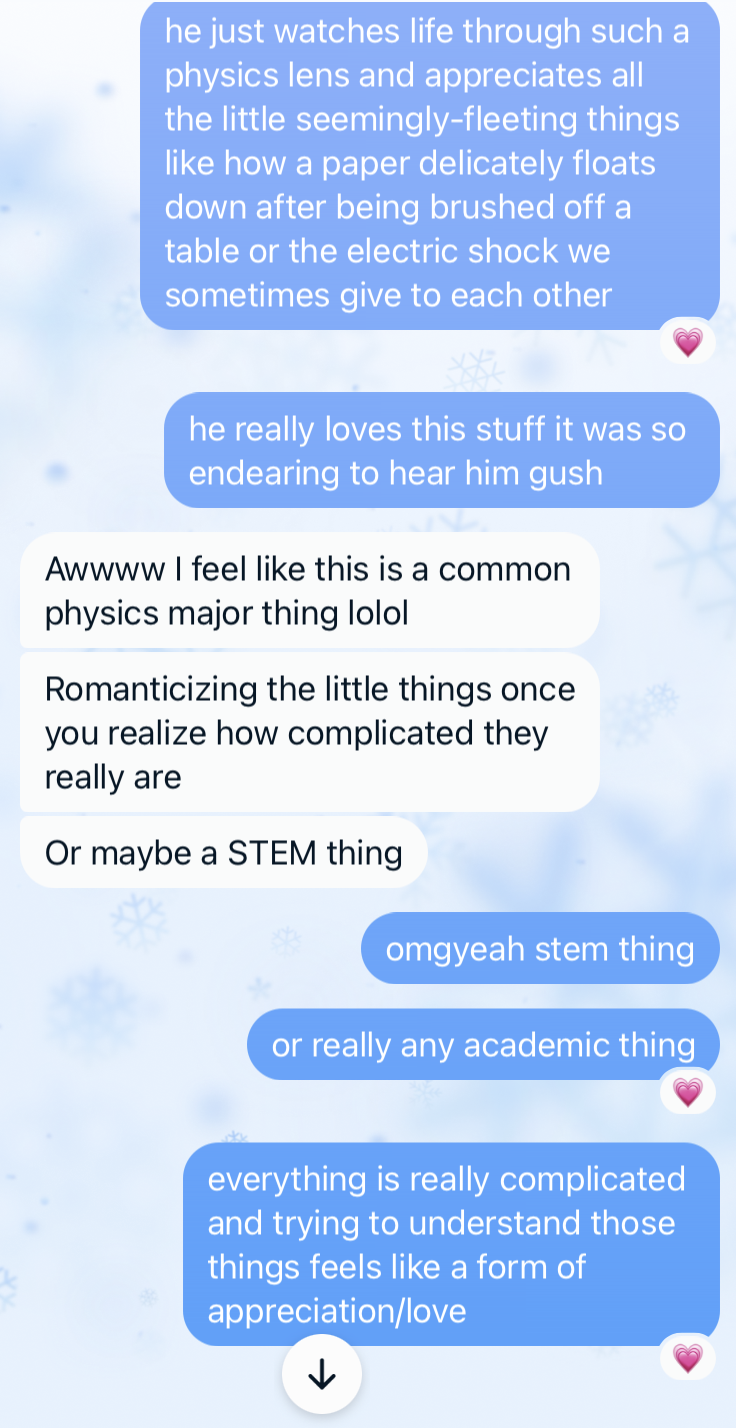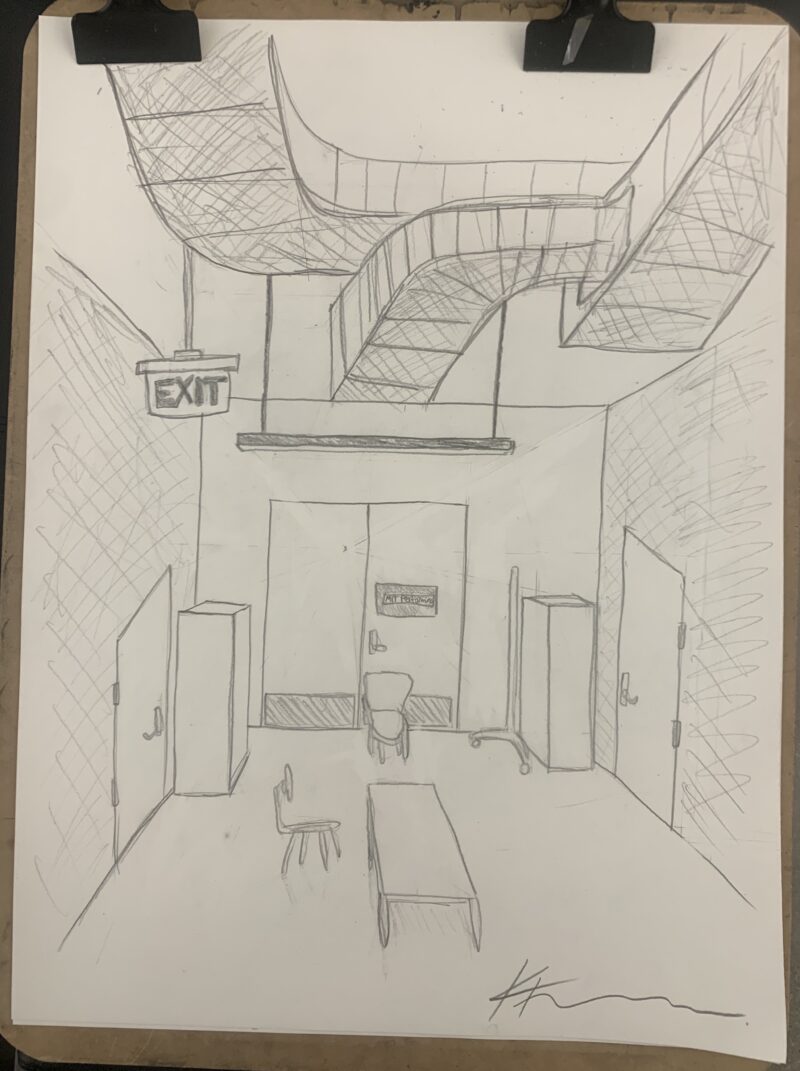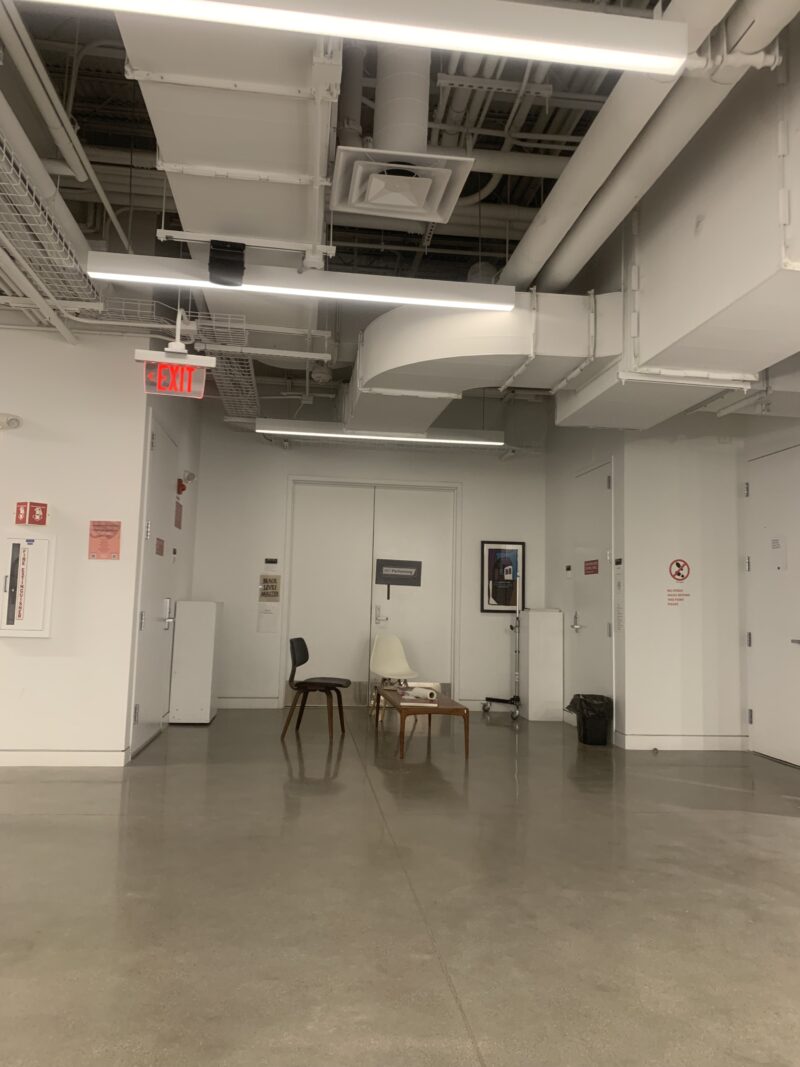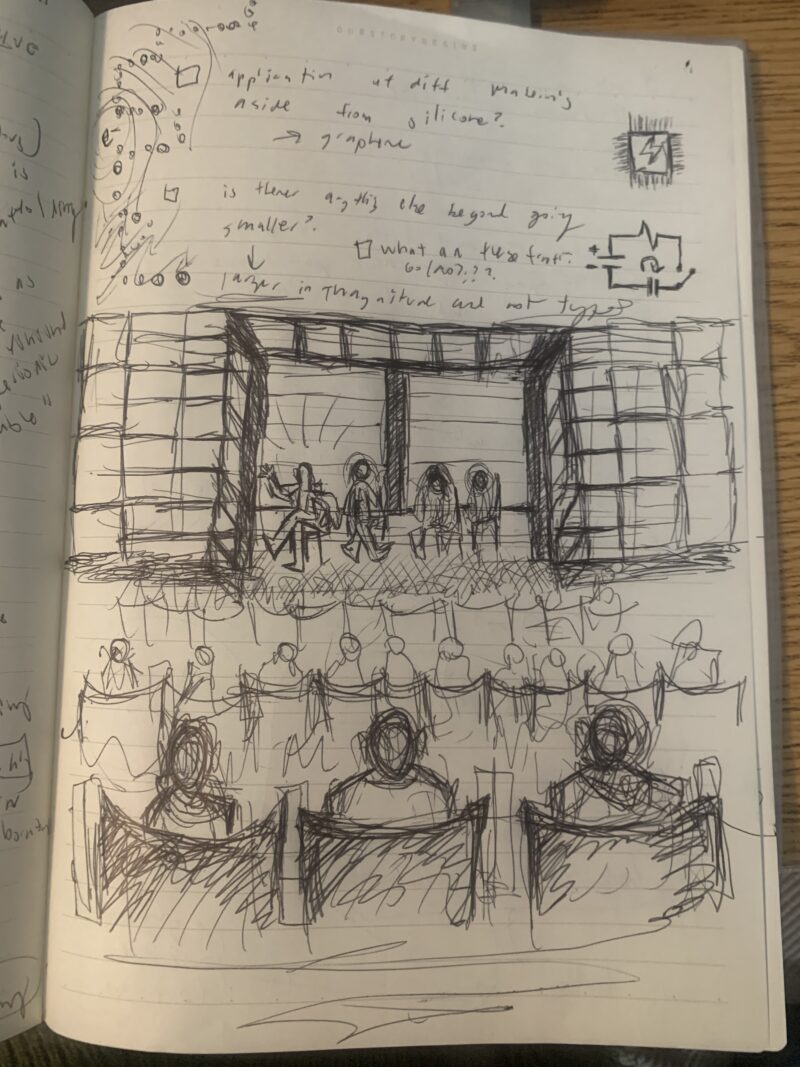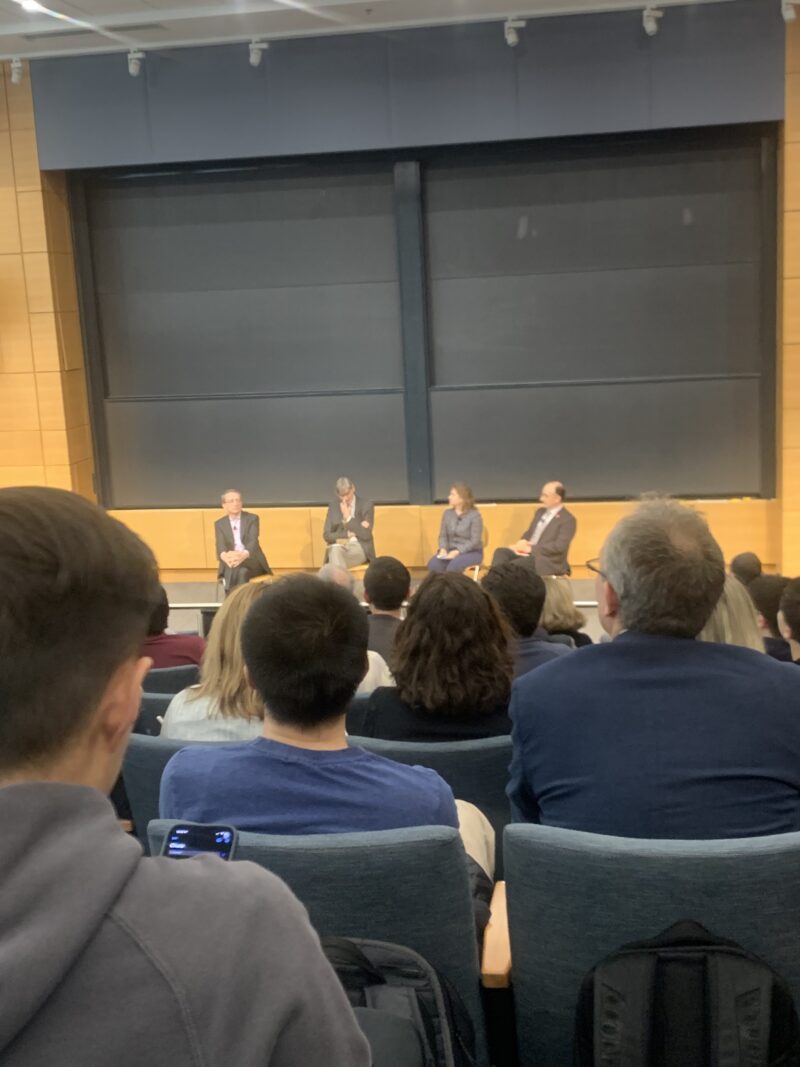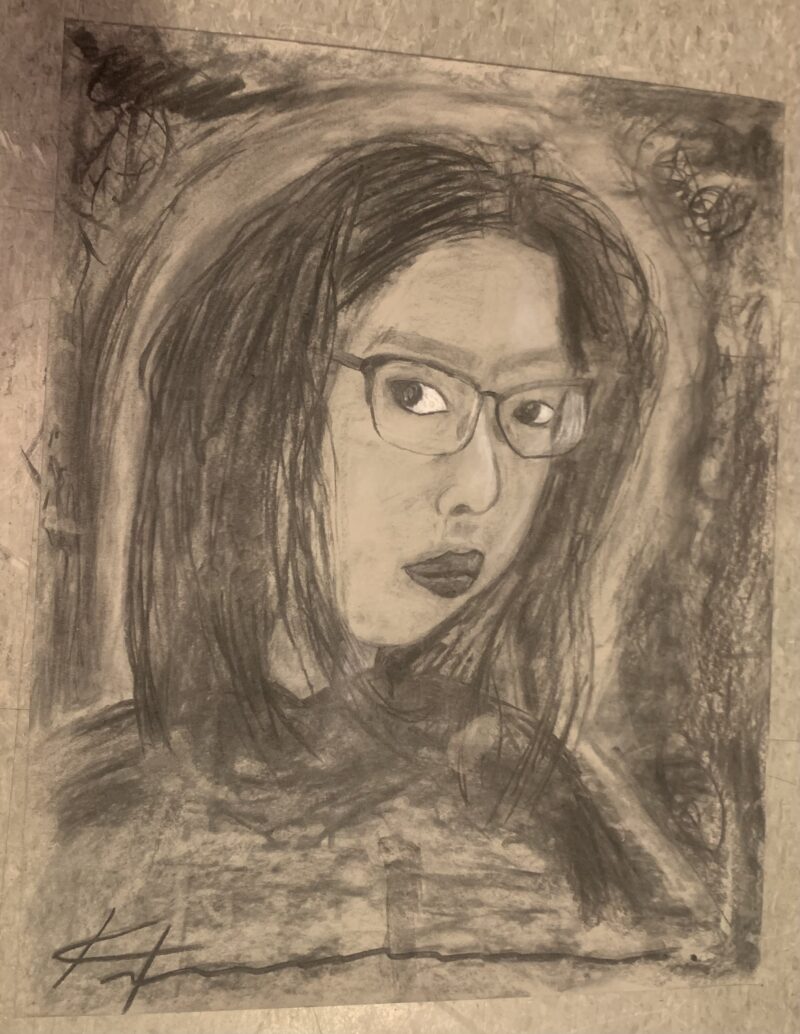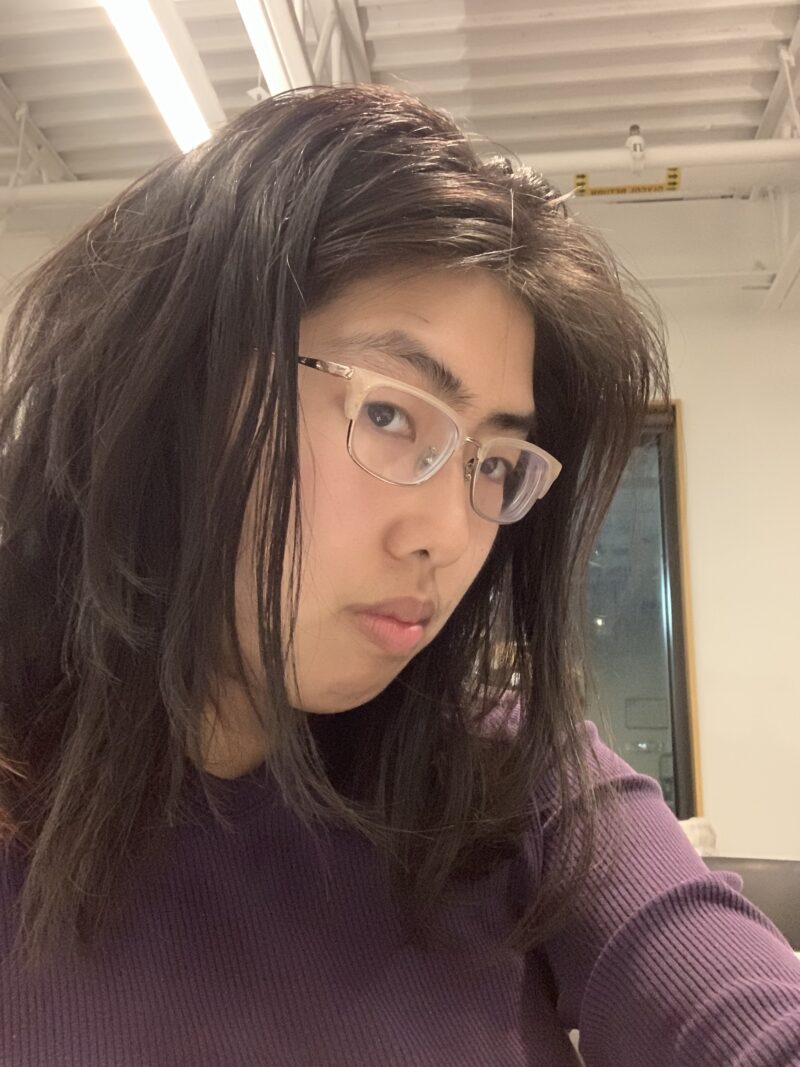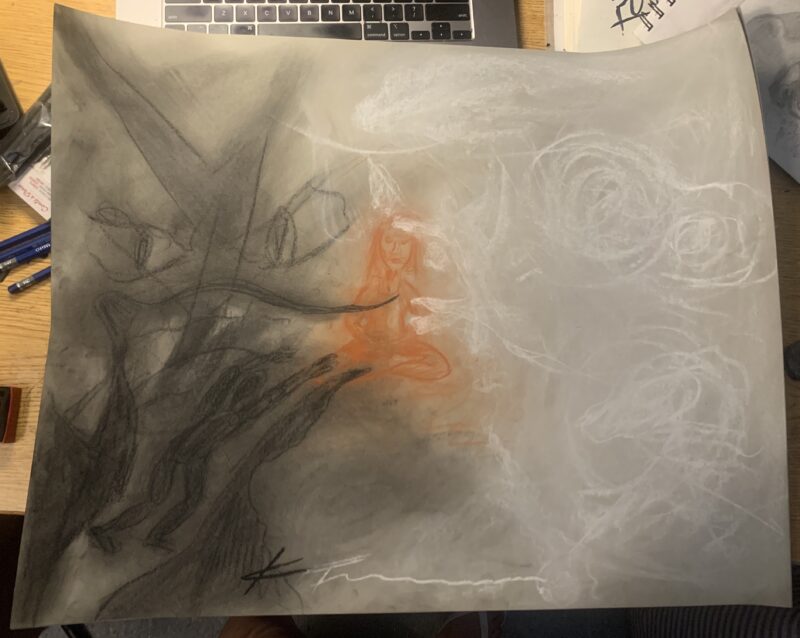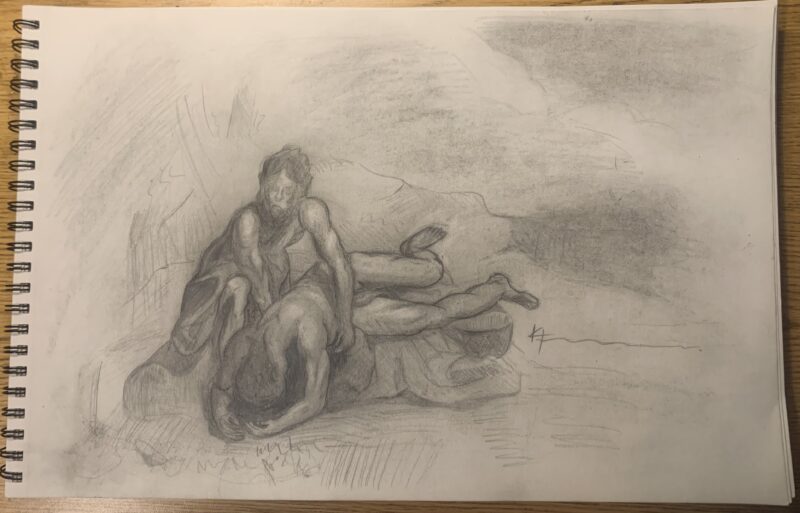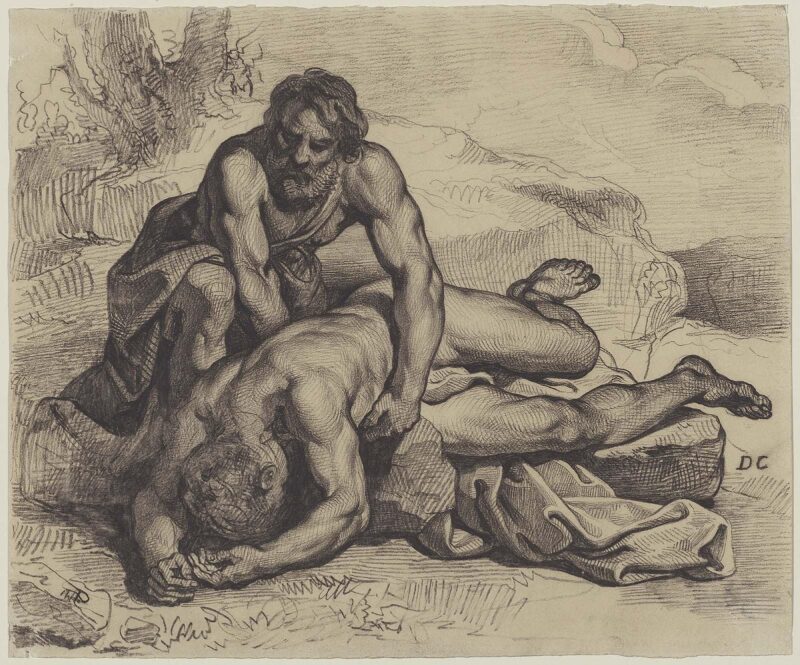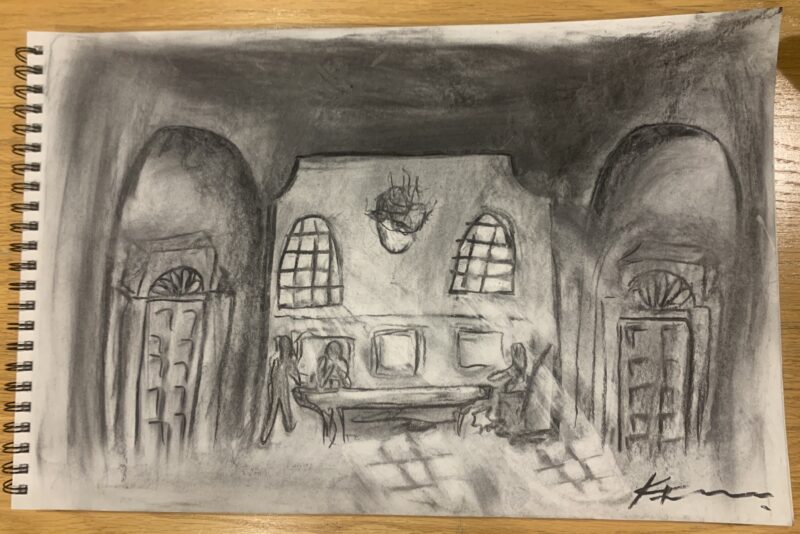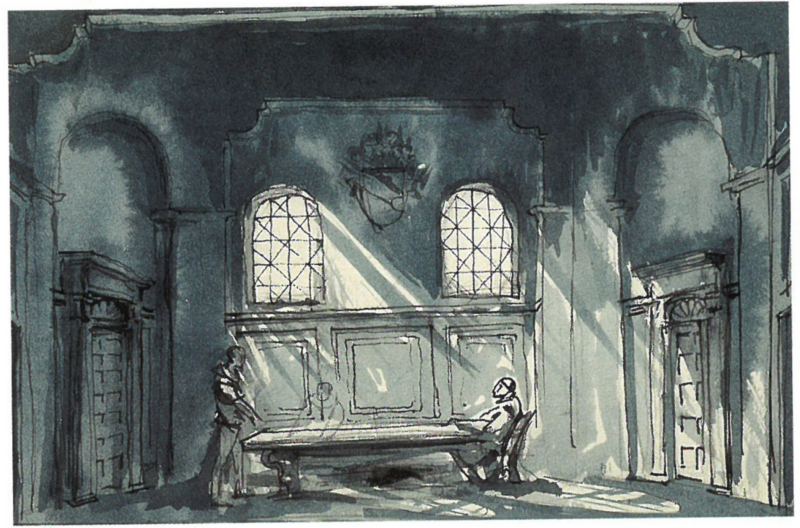
“i can only draw stick figures” by Kanokwan T. '26
musings on learning to draw
drawing class
Every Tuesday evening, right as the sun was setting in the horizon, I’d embark on a long bike ride over to the complete opposite side of campus.
At Building W97, the Theater Arts building, I took 21M.601 (Drawing for Designers). It’s one of my favorite classes so far. There are other bloggers who have written about this class, including Waly (who focused on gesture drawing), Afeefah (who shared their favorite pieces), and Danny and Allan (who commented on the art class scene as a whole at MIT). I focus more on the struggle of drawing, a selection of my pieces, and how drawing connects to everything.
From 7 to 10pm, the class was a long three hours, but it was always so worth it. As a class, we had one goal: learn to apply line and tone to capture reality. I liked the bare bones premise because I could focus better. Additional artistic factors like color, paint, imagination, and so on would’ve made art as a whole more overwhelming, at least I know it would in the beginning for me. Instead, our class used mostly-monotone pencil, crayon, and charcoal. It was approachable: here are a few tools, now draw what you see.
being ~bad~ at drawing
I must preface that I never thought of myself as a drawer.
In fact, for the larger part of my life, I’ve thought of myself as very bad at drawing. Like, anytime I tried to depict people, I’d end up with wonky stick figures. It was always a bit frustrating having images exist so vividly in my mind—so clear, they felt real—but they would get lost in translation to the page. One instance of this happened in high school robotics, where I tried to explain a DR4B linkage01 double-reverse 4-bar linkage! they have such sleek movement. i loved building these. more info <a href="https://wiki.purduesigbots.com/hardware/lifts/dr4b">here</a>. to my teammate, and my drawing was just an atrocious overlapping of rectangles and circles that ultimately looked like nothing. This difficulty in depicting “real” things led to my interest in the “unreal.” In my free time, I’ve enjoyed abstract painting, but largely because it’s hard to mess up “abstract,” if not impossible. It was safe. Reality was always difficult to do justice.
Basically, I’ve always wanted to learn to draw, and this class was an opportunity I eagerly decided to take on. It seems this want to draw is shared amongst many MIT students, because this is one of the few classes that requires you to apply for it through a Google form (FYI: most MIT classes you can just register for, no questions asked). Gosh, I essentially wrote a love letter to drawing in my application. I badly wanted to take this class, and am so grateful I was able to.
things i drew
Each class began with a demonstration of drawing techniques, followed by timed drawing prompts where the class applied what we learned.
Behind all of the polished class drawings, there exists many warm-ups and drafts. Every class ended off with a final piece that would be added to our portfolio. Here is a selection of mine:
inanimate objects
animate objects
Live models came in to pose for class a few times! It was really cool to work with real people. I wasn’t allowed to take photos, so I won’t be adding any references along with the drawings, but you get the idea.
After one class, my friend Charlotte W. ’23 asked me what felt different between drawing a real human vs. a not-real human. This was our conversation:
K: it was soooocoolllllleeeee. okay so you see them breathe. and get to keenly observe the way a breath translates to subtle movements in the rest of the body. the guy moved around to a bunch of different strange positions and we had 1 minute each for this one 20 minute warmup. I could go on but those are the main things I really enjoyed
C: I feel like it’s cool to notice so many little things. With drawing it general. It seems like it teaches you to take notice of things most people just rush by
K: it’s a visual romanticization of life
C: It makes sense that you would enjoy/be good at it because you romanticize (stealing your word) things already
K: awwwh thanks 🥰. it reminds me of a convo i had with dourmashkin recently where we talked about how he comes up with such great examples. he just watches life through such a physics lens and appreciates all the little seemingly-fleeting things like how a paper delicately floats down after being brushed off a table or the electric shock we sometimes give to each other. he really loves this stuff it was so endearing to hear him gush
C: Awwww I feel like this is a common physics major thing lolol. Romanticizing the little things once you realize how complicated they really are. Or maybe a STEM thing
K: omgyeah stem thing. or really any academic thing. everything is really complicated and trying to understand those things feels like a form of appreciation/love
rooms
self portraits
For one assignment, I had to produce two self portraits. I decided to draw a literal piece (that spoke more to the ego) and an abstract piece (that spoke more to the id and superego). I wanted my body to be turned away, but my eyes to be on the viewer. I find myself looking back to observe things a lot, and hoped for the first portrait to reflect that. The second piece feels best left unexplained, especially considering the abstractness.
master copies
The name captures these assignments well: I had to copy masters (select pieces and emulate them).
everything is connected to everything
I had a lightbulb moment!
One great thing about this class is you can do 1-on-1 consultations with Professor Sharon Lacey, who is a professional artist. I went into our call full of questions.
cad (computer-aided design)
While workshopping one of my self portraits, she suggested I add “construction lines,” which are temporary lines that help anchor permanent lines. I drew vertical lines descending from the corners of my eyes, horizontal lines to enclose my lips, midlines through my forehead and nose, and many other lines to orient all the features into place. Additionally, I revisited the “Sighting Method,” a technique I learned in class where one repeatedly compares the angles and lines of objects in real life to what is being drawn. How does the angle of the eyebrow compare to the angle at which the glasses sit? Because the eyes have been moved up, how does the mouth now sit? How does the nose size compare to the eye, but also the ears and cheek? Every feature affects every other feature.
This process felt oddly familiar, but I couldn’t put my finger on why. All of a sudden, it all connected: this was exactly like CAD. There’s literally a type of line in CAD softwares called “construction line” that functions exactly the same as the one I learned with Professor Lacey, and I voiced to her that connection. I’ve been teaching myself Fusion360 for the past year, and have found it challenging to create some intricate shapes, but it all became easier because of this drawing class. Every skill was transferable. In addition to applying line in CAD, I also learned to use tone. Changing the view settings in Fusion360 allows me to see how shadows fall to best capture what I’m trying to depict. I came out of the class excited to 3D design objects that were previously too intimidating for me to take on.
massage therapy
Similarly, I was also reminded of my mother’s work as a massage therapist. I told Professor Lacey about a time where I felt extremely sore in my shoulder from weight lifting and asked my mother for help. She began with massaging my leg, which I was really confused by. My legs didn’t hurt at all. My mom proceeded to explain that there are nerve “lines” that run through your entire body, and they’re all connected. To get to massaging even remotely near my shoulder, she had to tend to the lines that connected to it first. The bend of your leg changes the flux of arm muscle. This fascinated me, because I always thought of components of the body as very separate entities; one can move each limb independently. However, applied to drawing, I can look at how the adjustment of one limb affects the rest of the body, even in the subtlest of ways.
the butterfly effect
I had to mention this. The Butterfly Effect is known as the idea that small changes can ultimately lead to big changes. Mathematically, the effect has a much more deep, extensive definition. However, that’s beyond the scope of this blog, which centers more around the philosophy than the math. Edward Lorenz, the Father of Chaos Theory,02 <a href="https://en.wikipedia.org/wiki/Chaos_theory">one of my favorite theories EVER</a>, partly because of its engineering applications but mostly because itʻs just so beautiful. i love viewing the <a href="https://en.wikipedia.org/wiki/Lorenz_system">Lorenz Attractor,</a> which is basically a set of chaotic solutions (solutions that are super sensitive to what the initial conditions of a problem are) to the Lorenz system (a model of atmospheric convection). and the attractor, when graphed, happens to look somewhat like a butterfly, which I think is a cute coincidence of naming. first coined the term in 1972 when he shared in a lecture that “a butterfly flapping its wings in Brazil can produce a tornado in Texas.” In the context of life, the theory asserts that the smallest moments of the past, even ones that don’t seem to have to do anything with us, affect our present day and future. On the scale of drawing, the theory reminds me that even the tiniest of pencil strokes can make massive changes to a picture.
conclusion
I learned a lot of things from this class, both technical and non-technical.
Finally, I feel comfortable with at least attempting to draw things. Now, I find myself sketching in the margins of museum maps, my school notes, napkins, anything I can get my hands on. The class was formative to this comfort, but I’ve also come to learn the accessibility of drawing. Anyone can draw, so long as you put pencil to paper and practice. And, of course, I’ve learned that nothing, and I mean absolutely nothing, is left unconnected in this world.
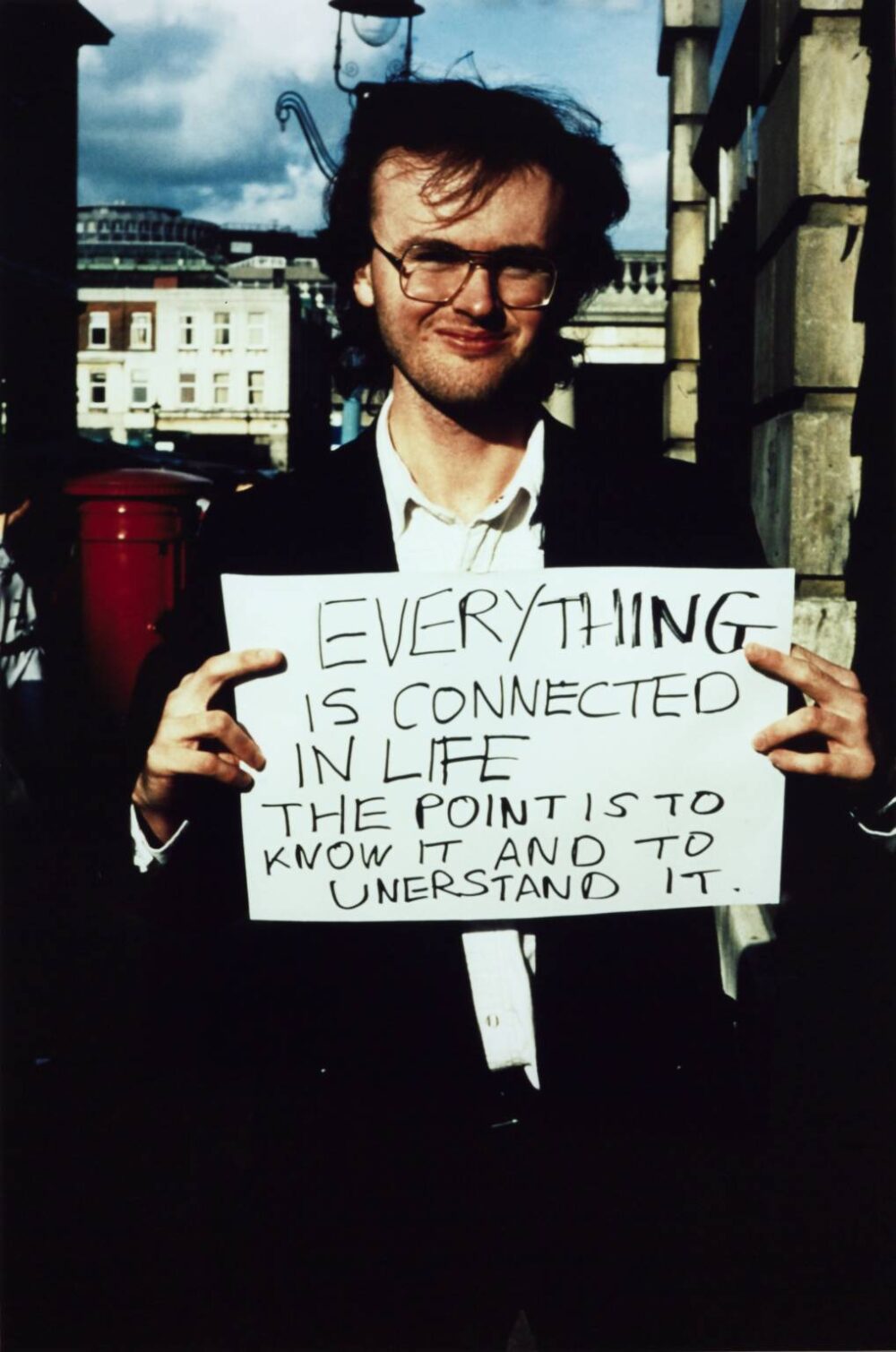
Source: The Tate Gallery, 1992-3
- double-reverse 4-bar linkage! they have such sleek movement. i loved building these. more info here. back to text ↑
- one of my favorite theories EVER, partly because of its engineering applications but mostly because itʻs just so beautiful. i love viewing the Lorenz Attractor, which is basically a set of chaotic solutions (solutions that are super sensitive to what the initial conditions of a problem are) to the Lorenz system (a model of atmospheric convection). and the attractor, when graphed, happens to look somewhat like a butterfly, which I think is a cute coincidence of naming. back to text ↑
